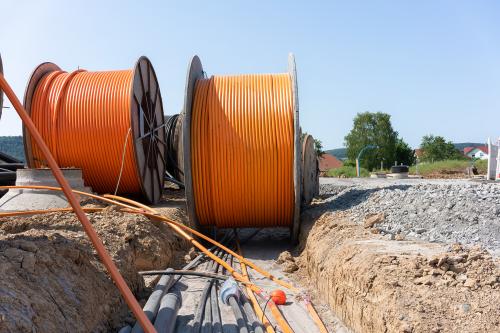Five years ago, 1,100 communities demonstrated their desire for next generation, gigabit-speed broadband by applying for Google Fiber, the company’s ultrafast Internet service. For several years, incumbent Internet service providers dismissed the concept, often saying no one wants that much speed and the cost of such networks did not justify the expense.
Yet in the past 12 months, every major incumbent, covering over 80 percent of the population, has announced plans to deliver mass-market gigabit. The largest ISP, Comcast, announced its entire footprint would be gig capable by 2018.
So can cities stop worrying about whether they’ll have the affordable, abundant bandwidth needed to thrive in the future?
No.
Announcements are not deployments. The catalyst for the announcements has been additional Google Fiber deployments. If Google’s effort stalls, actual deployments will also stall and price increases would follow.
Rather, the announcements suggest there are now four kinds of communities. Each has to address the challenge of assuring abundant bandwidth differently.
For communities that have or are likely to attract Google Fiber, the starting strategy is detailed in the handbook Google itself commissioned. Following that roadmap is no guarantee, but it dramatically increases the odds that Google or another new competitor will enter the market.
If Google arrives, the incumbent telecommunications company and cable provider will do what they have always done: accelerate their own gigabit efforts. Soon, residents should have a choice for affordable, abundant bandwidth.
According to the research firm Bernstein, Google Fiber could expand to, at most, 20 million homes in six to eight years. Communities serving those other 100 plus million homes should follow the sensible recommendations within the Google handbook, but they’ll need to develop different growth strategies.
One set of such communities are those that don’t fit the Google algorithm but enjoy the scale and density necessary to create an attractive next generation investment case. For example, New York and Los Angeles are undertaking initiatives that repurpose existing assets to improve the investment case for next generation facilities.
Another set of communities are smaller, less dense communities but with characteristics that can attract private capital to accelerate next generation deployments. Over the last four years, Gig.U worked with three dozen university communities that fit this description. While some were able to attract Google Fiber, others, such as Champagne-Urbana, Gainesville, or a group of communities in Connecticut, have attracted private investment for new deployments without Google. Non-university communities, like South Portland, have done the same. We’ve collected a number of lessons from these efforts in our handbook, with the common theme being the necessity of communities acting to lower the costs of deploying new networks.
The fourth set of communities are rural, where government involvement must play a larger role. Even here, there are creative solutions. Westminster, Maryland and Holly Springs, North Carolina, both attracted private interest with a public/private partnership that will bring their residents an affordable gig long before wealthier communities like Beverly Hills or Bethesda, Maryland.
One lesson from the last year is that in a few years, the gigabit divide will not be about wealth or density; it will between those communities that had a plan and those who didn’t.



Commentary
Four paths to abundant Internet bandwidth
November 4, 2015